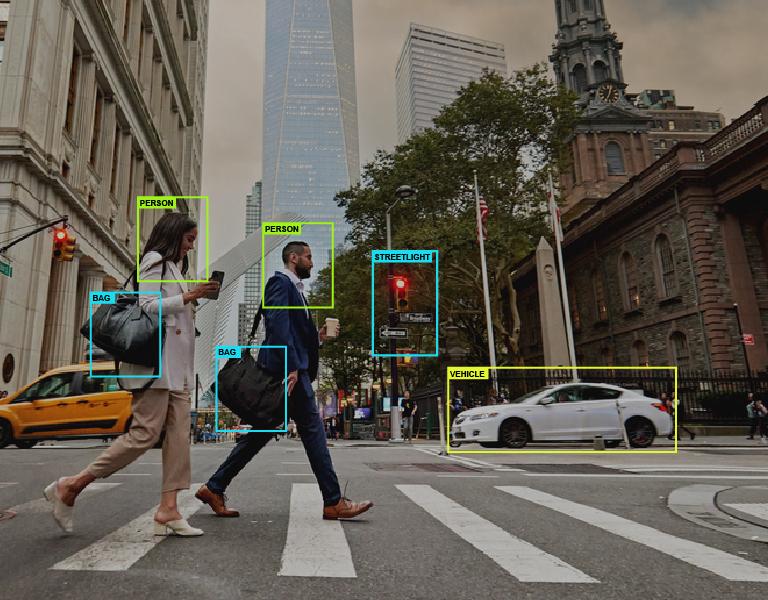Companies, particularly in the Media and Entertainment industry, produce a massive amount of video content each year. It’s expected that video will account for 82% of all internet traffic by the end of this year. The pervasiveness of mobile devices is a key component of this trend, with 75% of videos occurring via smartphones.
Although the pandemic and the SAG-AFTRA strike slowed down production in recent years, everyone has started to ramp up production.
But video production isn’t solely applicable to movies and television shows. Roughly 91% of businesses use video as a marketing tool, and there is a reason for it. People engage more with content, retaining the message and remembering the brand more easily. So much so that consumers expect brands to produce more video content.
If you throw in training videos for internal use, that’s a lot of video assets companies must store, manage, and distribute.
A video asset is any type of digital video content that an organization finds valuable. These types of assets are demanding in both bandwidth and required storage, making a video asset management system essential to effectively handling this content.
The challenges companies face managing video assets include:
- Disconnected video management systems and applications
- Lack of metadata attached to each file
- Disparate file locations and types
- Lack of accessibility for teams and partners that aren’t geographically collocated
- Gaps in security, as well as completely backing up video files
To properly handle video storage and enable teams to find the right media file at any given time, companies need to consolidate the storage locations into a single location. This will help increase operational efficiency, lower video production costs, and accelerate the creation of even more video content.
In this blog, we’ll cover these top four questions to help provide you with a more complete understanding of VAM:
- What is video asset management?
- Is video asset management the same as DAM?
- How are video assets stored and managed?
- What are the best practices for managing video assets?
- How to leverage AI in video asset management
What is video asset management?
In our previous blog on media asset management (MAM), we discussed how VAM is a subset of MAM. However, the difference is that media asset management involves media files beyond video, whereas VAM deals exclusively with video assets.
Video asset management (VAM) is the system and procedures used to store, manage, and distribute video assets and media files. This video content needs to be accessible to internal teams in the production line who can quickly find a particular media file, understand what is in it, and take the necessary steps to gain approval for use.
Any organization that actively produces video content needs a video asset management solution to ensure they have the best tools to utilize its video assets effectively. An organization can vary in size, from massive media companies like Netflix to small, independent production studios.
The main benefits of VAM include:
- Rich data that accelerates search
- A clear understating of what is contained within a video file to reduce copyright risk
- Minimized training for different applications
- Increased accessibility with a single location in the cloud
- Easier sharing and collaboration capabilities
- Reduced security and backup risks
Is video asset management the same as DAM?
VAM is different from digital asset management, which you can learn about in our blog on DAM, in that it only deals with the management of video assets. However, you could consider video asset management a subset of digital asset management.
To put it more plainly, digital asset management is a broad set of software solutions that help people store, manage, and share their content. A good way to think of it is that DAM is more of an umbrella term that contains all of the other asset management terms underneath it, including MAM, BAM, and VAM.
How Are Video Assets Stored and Managed?
The main struggle facing companies today is how they work with their video content. In many cases, they use separate applications that aren’t integrated, disrupting their production workflow. This has several implications:
- People must be trained on how to use all these different applications or else risk slowing down projects
- Video content is stored in different file formats, making it difficult for teams to track down
- The contents of these video assets remain unknown or are tagged ineffectively, causing problems when searching for a particular file or scene, and creating manual work if their use requires third-party approval
Companies that don’t have their video assets stored in a single, backed-up location in the cloud risk losing their content, face serious security concerns, and ultimately reduce the full value they can extract from each asset they’ve created. But with the right video asset management platform, as well as implementing some best practices, these risks can be minimized if not completely reduced.
What are the best practices for managing video assets?
While having a video asset management system is essential to success with maintaining, storing, and distributing video assets, you should also follow these best practices to make sure that you avoid any issues that reduce its effectiveness.
Maintain a metadata tagging standard
Artificial intelligence has become essential to managing assets of any kind. While it can provide you with a lot of rich data, you’ll want to make sure that you have a standard in place for tagging. This ensures that, regardless of who works with a file, the attached data will be in the same format as the rest of your archive files.
Develop operating procedures for handling assets
Companies should create internal documentation and training to ensure that all new and current employees understand how to manage and share video content effectively. Everything should flow through the VAM solution rather than through other solutions like Dropbox or Google Drive to minimize archive fragmentation.
Establish permissions for sharing
If you are an organization that has multiple groups that aren’t collocated and work with different partners, then you should ensure that everyone understands who can access what at any given time. This can often be handled within the VAM platform itself, but you will also want to have some documentation in place to minimize accidental sharing both within and outside the platform.
How to Leverage AI in Video Asset Management
Artificial intelligence has become essential to effective asset management—this is especially true for VAM.
For instance, think about a two-and-a-half-hour movie. Just having that file stored in the archive with inadequate tagging creates a ton of work if they want to go back and reuse or license out that content. This usually means manually sifting through each scene.
However, with artificial intelligence, large media files like movies and television shows can have detailed tagging that tells you who is in a scene, what’s happening, and if there are any third-party brand placements. This saves an organization time and money while accelerating its ability to get approval if needed.
Repurposing archival content
With the advent of social media video consumption, companies are also reusing content to engage with fans of their shows. For example, say you want to create a compilation video of one of the characters in a show doing their signature one-liner. Imagine how long it would take to sift through multiple seasons to find each instance. With AI, you can simply find that one-liner by typing in the text to surface all of those moments in a matter of seconds.
Veritone Digital Media Hub is an AI-powered media hub that harnesses AI for a specific purpose—to make every piece of media searchable, accessible, and ready to drive revenue. Leveraging a rich collection of cognitive engines through aiWARE, Digital Media Hub provides companies with a modern way to easily automate, curate, and activate their media files.
Finding new revenue streams
With Veritone Digital Media Hub, not only is it easier for organizations to repurpose and localize their archived content, but it also presents the opportunity to create a branded digital marketplace to license the content to different media buyers.
Building a branded digital storefront increases reliability, trust, and ease of use for partners and buyers while transitioning video content from a cost center into a center of profit and passive income.
To learn about Digital Media Hub, contact a Veritone team member today.
Resources:
Nogen Tech: Application of Video Marketing Statistics Report that You Need to Know in 2023
WordStream: 75 Staggering Video Marketing Statistics





